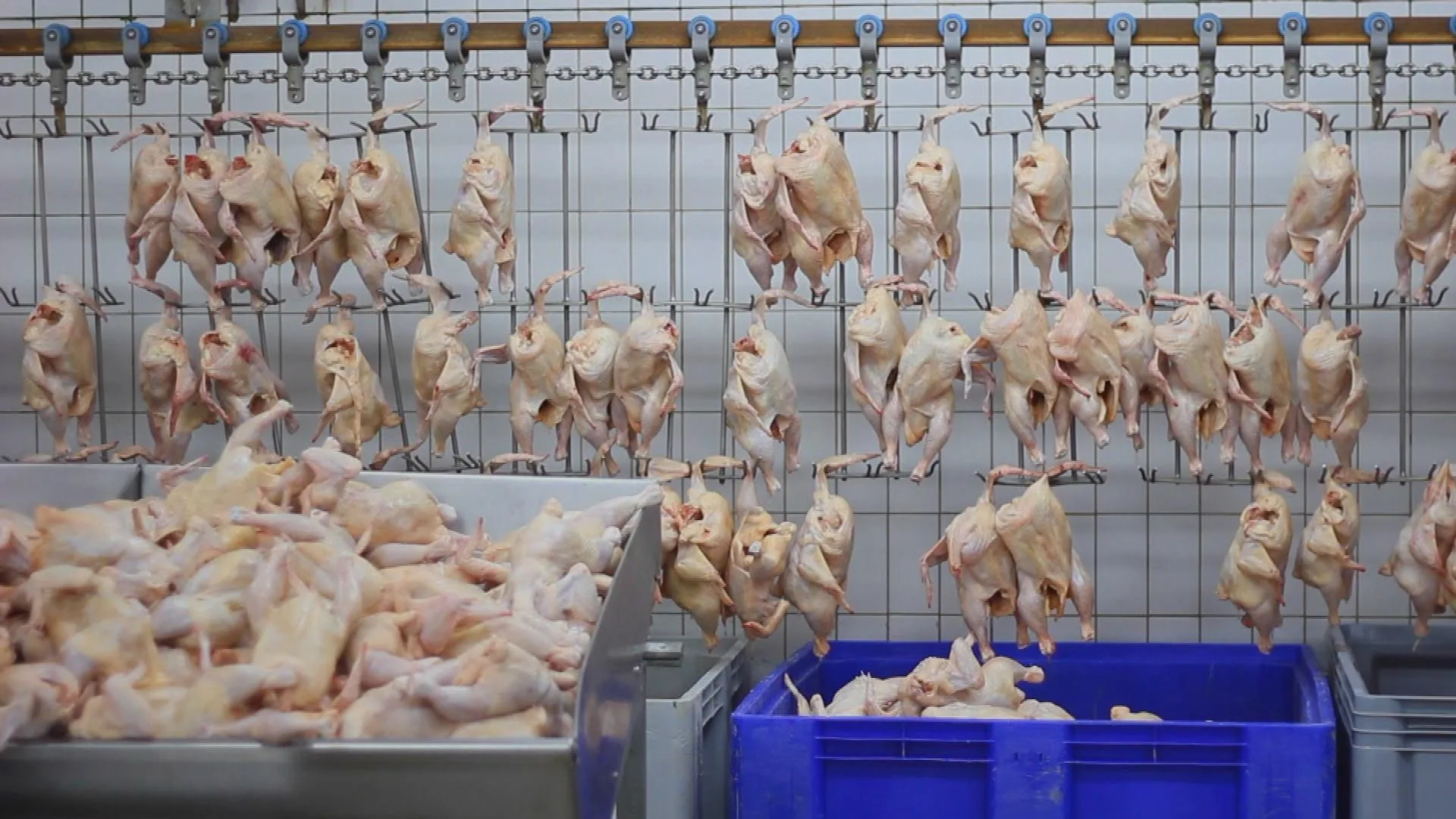USDA Sets New Limits on Salmonella in Your Chicken Wings

February 4, 2016
Share
Every year, salmonella causes an estimated one million foodborne illnesses, 19,000 hospitalizations and 380 deaths, according to the Centers for Disease Control and Prevention. One third of those cases — around 375,000 — can be attributed to meat, poultry or processed egg products, according to the Department of Agriculture.
On Thursday, the U.S. Department of Agriculture announced new standards that it says would prevent an estimated 50,000 foodborne illnesses a year.
The changes are aimed at closing several of the inspection gaps examined by FRONTLINE in the 2015 investigation, The Trouble with Chicken.
While government inspections have traditionally focused on whole chickens and turkeys, critics complain that little attention has been paid to parts — legs, breasts, wings, etc. — or to ground chicken and turkey. That’s a problem, they say, because 80 percent of the chicken currently sold in the United States is cut into parts, a process that can release salmonella buried in the skin. The USDA’s own research shows that about one in four chicken parts sold around the country is contaminated with salmonella.
But unlike E. coli 0157, a deadly strain of bacteria that regulators have a zero-tolerance policy for, the government allows a certain amount of salmonella in poultry. The assumption is that consumers know how to safely prepare poultry without risking under-cooking or cross-contamination. However, high-profile outbreaks linked to poultry in recent years, especially ones involving a more virulent strain called salmonella Heidelberg, have forced regulators to rethink their policies.
Under the agency’s new standards, the amount of salmonella allowed in ground chicken and ground turkey go down. The rate would fall from 44.6 percent to 25 percent for ground chicken, and from 49.9 percent to 13.5 percent for ground turkey. The agency also established specific standards for chicken parts for the first time, at 15.4 percent. The USDA said the standards are designed to reduce illnesses linked specifically to salmonella by 30 percent.
That may not be enough, though, to quiet the debate over how to prevent foodborne illnesses.
Under the current framework, the USDA simply tests for the presence of salmonella, said Sandra Eskin, director of food safety at Pew Charitable Trusts. However, some have pointed out that testing for salmonella as a whole doesn’t target strains that are particularly dangerous to public health. They argue that strains of salmonella that are antibiotic-resistant or virulent, like salmonella Heidelberg, should be treated with a zero tolerance policy like E. coli 0157.
“Presence and absence doesn’t tell us enough of a story about how particularly virulent or dangerous eating a contaminated product can be,” Eskin says. “I think that’s the next step.”
The USDA plan will also increase the frequency of testing at processing plants to see whether its standards are addressing contamination.
The changes to testing are significant, according to Karin Hoelzer, an officer in health programs at Pew Charitable Trusts. Under the old framework, facilities would often know when inspectors were coming, and regulators would only take samples over consecutive days in a very short period of time. That created several problems, including the possibility of facilities changing their practices ahead of inspections. The new system, which would take samples from large facilities on a weekly basis, and sample smaller facilities at regular intervals during the year, would make sure “the samples are more spread out and that they capture the whole year,” Hoelzer said.
The agency plans to post test results from such sampling online to show which facilities have passed or failed. Alfred Almanza, the USDA’s deputy under secretary for food safety, told NPR that posting the results online would offer companies “pretty significant deterrents, or incentives for them to meet or exceed our standard.”

Related Documentaries
Latest Documentaries
Related Stories
Related Stories
Explore
Policies
Teacher Center
Funding for FRONTLINE is provided through the support of PBS viewers and by the Corporation for Public Broadcasting, with major support from Ford Foundation. Additional funding is provided the Abrams Foundation, Park Foundation, John D. and Catherine T. MacArthur Foundation, Heising-Simons Foundation, and the FRONTLINE Trust, with major support from Jon and Jo Ann Hagler on behalf of the Jon L. Hagler Foundation, and additional support from Koo and Patricia Yuen. FRONTLINE is a registered trademark of WGBH Educational Foundation. Web Site Copyright ©1995-2025 WGBH Educational Foundation. PBS is a 501(c)(3) not-for-profit organization.





















